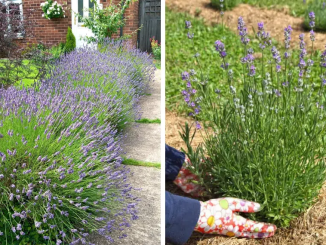
Starting seeds in January is an excellent way to get a head start on your gardening season. By sowing certain seeds indoors during this chilly month, you can nurture strong seedlings ready to transplant when the weather warms.
Whether you’re planning a flower-filled garden or a productive vegetable patch, here are 10 seeds to start in January and tips on how to grow them successfully.
Why Start Seeds in January?
- Long Growing Season: Some plants need extra time to mature, and starting early ensures they’re ready for harvest or bloom when the weather is right.
- Cost-Effective: Growing from seeds is cheaper than buying mature plants.
- Variety Selection: Starting seeds allows you to choose from a wider range of plant varieties.
- Stronger Plants: Homegrown seedlings are often healthier and better adapted to your local environment.
1. Tomatoes
Why Start in January?
Tomatoes have a long growing season, and starting seeds in January ensures robust plants ready for transplanting in late spring.
How to Grow:
- Use seed trays filled with seed-starting mix.
- Keep the soil consistently moist and place trays in a warm, sunny location or under grow lights.
- Transplant to larger pots once seedlings develop their first true leaves.
2. Peppers (Sweet and Hot)
Why Start in January?
Peppers, like tomatoes, require a long growing season to reach full maturity. Early sowing ensures a productive harvest.
How to Grow:
- Sow seeds in small pots and cover with a thin layer of soil.
- Provide warmth (70–85°F) for germination and plenty of light after sprouting.
- Transplant outdoors when temperatures consistently stay above 60°F.
3. Eggplants
Why Start in January?
Eggplants thrive in warm weather, and starting seeds early gives them ample time to grow before transplanting.
How to Grow:
- Plant seeds 1/4 inch deep in seed trays.
- Keep the soil warm and moist, and use grow lights for 12–16 hours daily.
- Harden off seedlings before planting outdoors.
4. Onions
Why Start in January?
Onions need an early start to develop large bulbs by late spring or summer.
How to Grow:
- Sow seeds in shallow trays or containers.
- Provide consistent moisture and bright light.
- Transplant seedlings into the garden when they reach 4 inches tall.
5. Broccoli
Why Start in January?
Broccoli thrives in cooler weather, making it ideal for early spring planting. Starting seeds indoors in January ensures strong transplants.
How to Grow:
- Sow seeds 1/4 inch deep in trays or pots.
- Keep the soil moist and place under grow lights or in a sunny window.
- Transplant outdoors 4–6 weeks before your last frost date.
6. Cauliflower
Why Start in January?
Like broccoli, cauliflower grows best in cooler weather, making January the perfect time to start seeds.
How to Grow:
- Plant seeds 1/4 inch deep in seed-starting trays.
- Keep seedlings in a well-lit area and maintain consistent moisture.
- Transplant to the garden before the weather becomes too warm.
7. Spinach
Why Start in January?
Spinach is a hardy, fast-growing green that can be started indoors and transplanted outdoors for an early spring harvest.
How to Grow:
- Sow seeds in pots or trays filled with nutrient-rich soil.
- Provide cool temperatures (50–60°F) and adequate light.
- Harden off seedlings before transplanting to your garden.
8. Lettuce
Why Start in January?
Lettuce is another cool-weather crop that thrives when started indoors and transplanted early in the season.
How to Grow:
- Sow seeds in shallow trays and keep the soil consistently moist.
- Place trays in a bright location or under grow lights.
- Transplant outdoors when seedlings are 2–3 inches tall.
9. Herbs (Basil, Parsley, Thyme)
Why Start in January?
Herbs are easy to grow indoors and can be transplanted outdoors when the weather warms. Starting them early ensures a steady supply for your kitchen.
How to Grow:
- Plant seeds in small pots with well-draining soil.
- Provide plenty of sunlight or artificial light for 12–16 hours daily.
- Harvest young leaves regularly to encourage growth.
10. Pansies
Why Start in January?
Pansies are cold-tolerant flowers that can be planted outdoors in early spring for vibrant garden color.
How to Grow:
- Sow seeds in trays and lightly cover with soil.
- Keep the soil moist and maintain a temperature of 60–70°F.
- Transplant into containers or garden beds when frost risk has passed.
Tips for Successful Seed Starting in January
- Use Quality Seeds: Choose high-quality seeds from reputable suppliers to ensure good germination rates.
- Provide Adequate Light: Use grow lights or a bright windowsill to give seedlings at least 12–16 hours of light daily.
- Maintain Consistent Moisture: Keep the soil moist but not waterlogged. Use a spray bottle to avoid overwatering.
- Control Temperature: Most seeds germinate best in temperatures between 65–85°F. Use a seedling heat mat if necessary.
- Label Your Seeds: Use labels or markers to keep track of what you’ve planted in each container.
Starting seeds in January is a proactive way to kick off your gardening season. By sowing these 10 seeds indoors, you’ll give your plants a head start and set the stage for a productive and beautiful garden.


